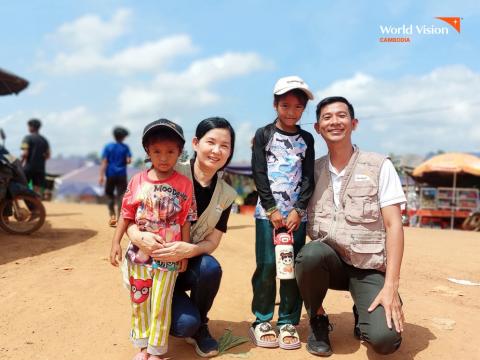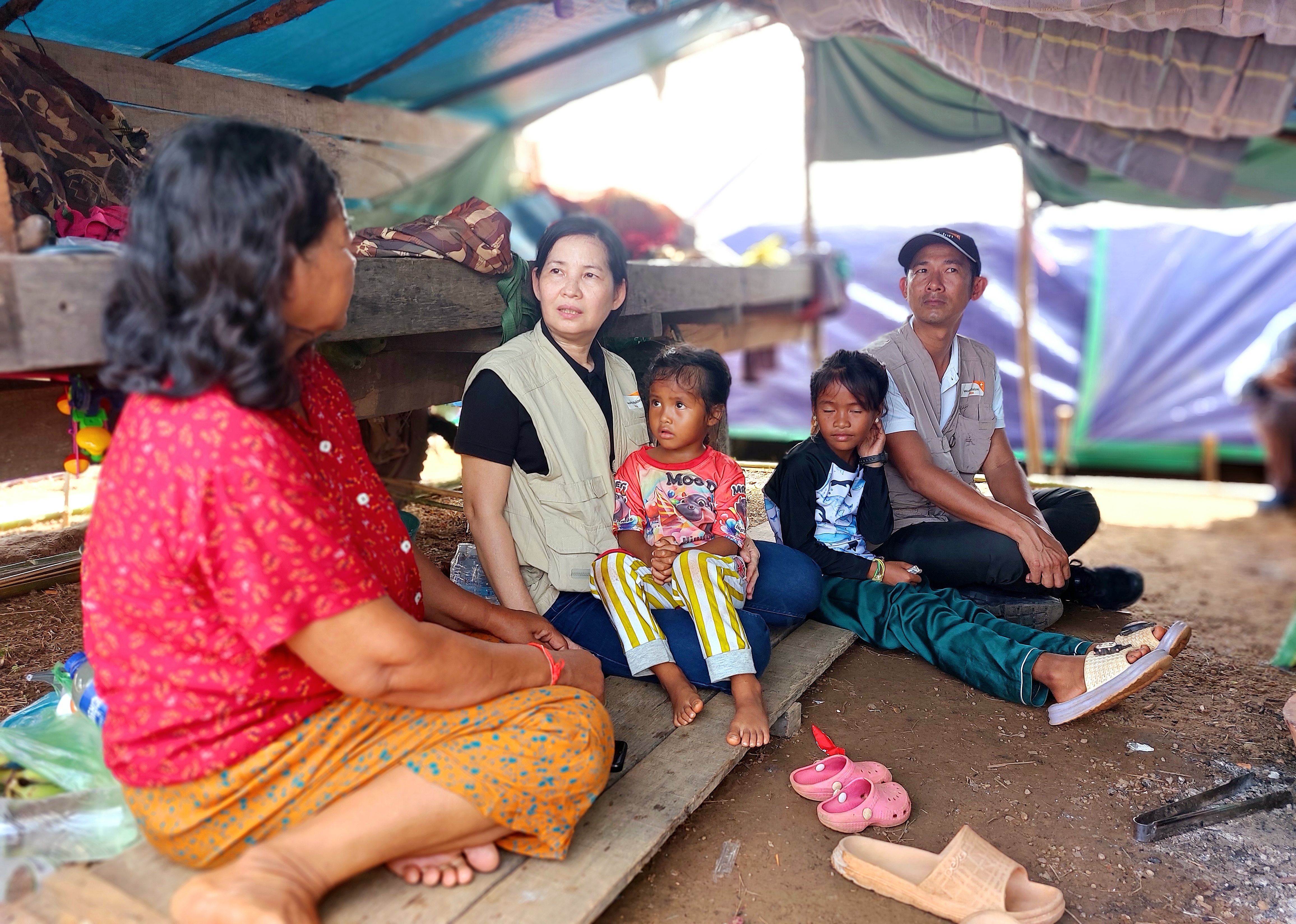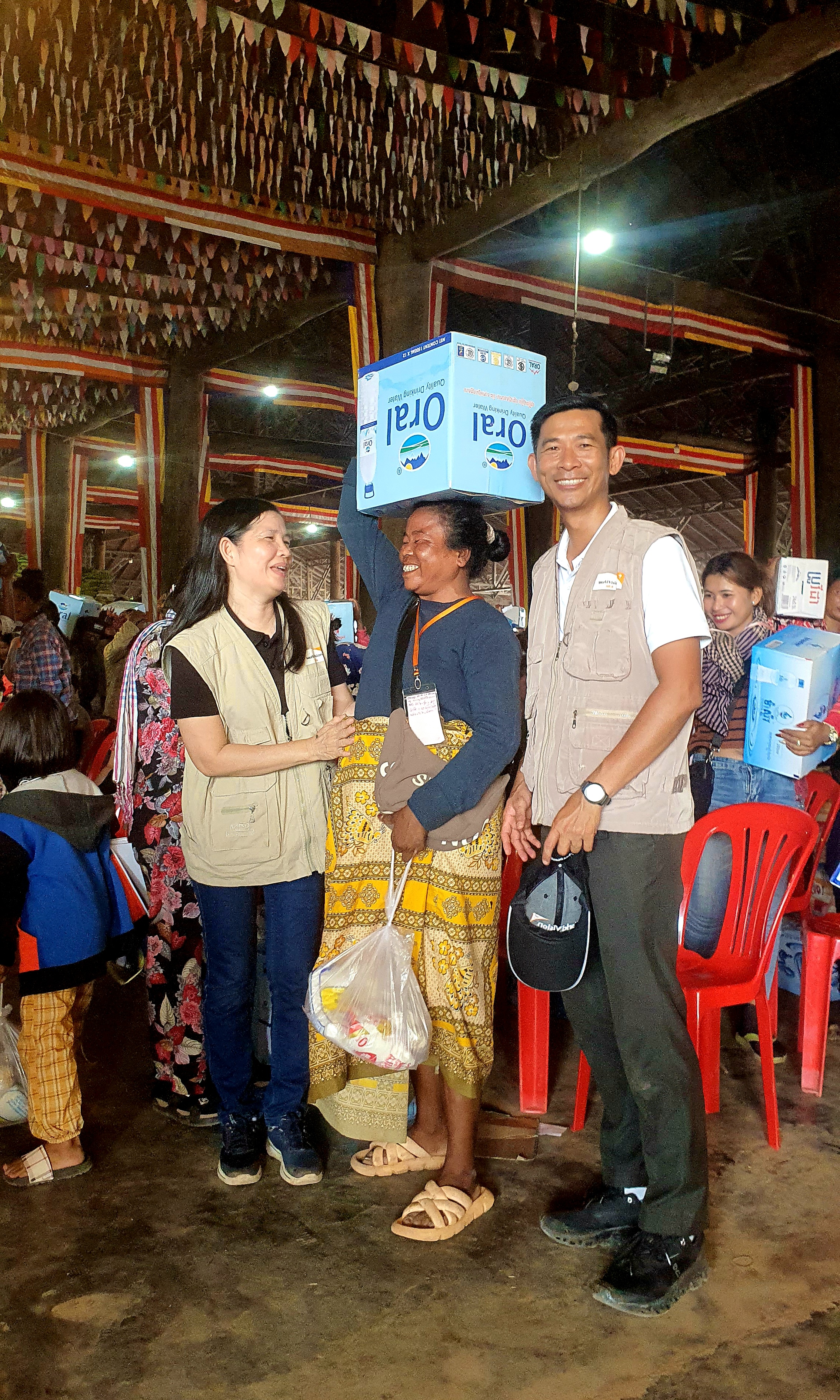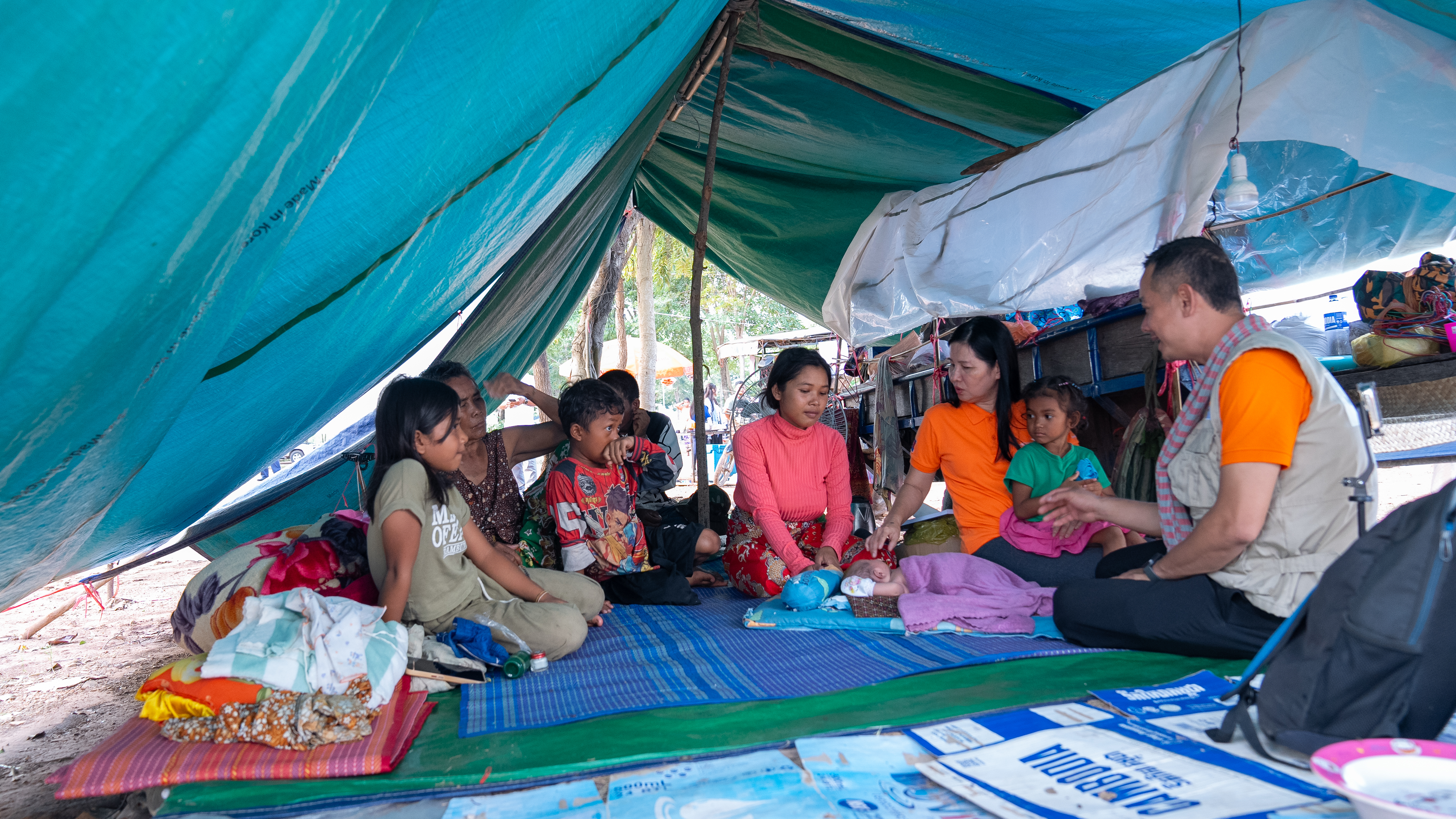First-hand insights into the needs of displaced families

During the visit of Sou Heak Taing, Support Service Director of World Vision International in Cambodia, visited to the camps on 30 and 31 July, World Vision’s leadership saw first-hand the urgent needs of displaced families. World Vision cannot respond alone. We urgently call on government partners, local organisations, donors, and the private sector to stand with us in protecting and empowering children. Together, we can provide the financial recovery, job opportunities, and long-term support that families need to rebuild their lives with dignity and hope—ensuring children can return to their home villages, resume their education, and grow up in safety and normalcy.
-------------------
When I first arrived at the camp, I looked about 300 metres into the distance, and all I could see were rows upon rows of plastic coverings. It was heartbreaking. There were so many families, stretching as far as the eye could see.
It is the rainy season here in Cambodia; without the rain, the scorching sun would beat down relentlessly. Families are living on muddy, uneven ground, with no flat surfaces—only bare, bumpy earth. My heart broke seeing their condition. Entering the camp and witnessing the environment was deeply shocking and traumatising.
I kept asking myself: How is this still happening in today’s world? These people once enjoyed the comfort of their homes and normal lives. Now they have been forced to flee, not knowing when—or if—they will return. Families who once lived with dignity are now crammed into temporary shelters.
I met a grandmother who fled her village on the morning of 24 July with her two grandchildren on a motorbike. While fleeing, she saw another villager ahead of her, also on a motorbike, struck by a bomb shell. It shattered his arm, and he collapsed with his bike.
She told me:
“Teacher, I’m so sorry for him. I couldn’t help him. All I could do was apologise and go. I had to protect my grandchildren.”
She was overwhelmed with guilt and anxiety, but she had to keep going. Later, she felt some relief knowing an ambulance had reached him.

In the camp, some people were caring for grandchildren, others for injured relatives. Many had loved ones serving on the front lines. This conflict has left deep emotional scars on the most vulnerable.
Children are visibly distressed, despite the availability of some basic services. While food and shelter are provided, mental health and emotional support are severely lacking.
At the Reading Camp and Child-Friendly Space, I met a young girl drawing a building.
“What are you drawing?” I asked.
“My school,” she replied.
“Why are you drawing it?”
“I miss my school. I want to go back to study, but I can’t. There are bombs. It was loud and scary. I was so afraid.”
Another child, just three years old, told me she hadn’t slept well the night before.
“No, I miss my home. I’m scared it will get hit by bombs and burn down,” she said.
These are very young children, experiencing fear and trauma at a level no child should endure. These moments will stay with them for the rest of their lives.
Our field staff have been working on relocating families since the first day of the border conflict. The most significant influx came on 24 July, when most families were moved to camps across Preah Vihear, Banteay Meanchey, and Siem Reap.
World Vision initiated a small-scale response at the Wat Por 5000 camp on 9 June 2025. We set up reading camps and provided food, and we are now developing a child protection and psychosocial support programme through learning activities and simple play.
Communities have received support for basic needs like food and shelter. However, there are significant limitations in accessing nutritious food, especially for children. The overcrowded environment is unhealthy, and the emotional toll is evident—people often begin to cry while speaking. It’s clear that while material needs are essential, mental and emotional healing is equally urgent, even if families return home.
One moment that deeply touched me was visiting another camp wearing my World Vision shirt. A group of children began reading the logo aloud:
“World Vision.”
They told me they had seen this logo at home, and now it had “followed” them to the camp.
“Why do you think World Vision followed you here?” I asked.
“To help us, to teach us, and to give us food,” they replied.
It was a moment that reminded me how much our presence means to them.
Before I left, I met a baby just ten days old. His mother had given birth shortly before fleeing their home. Pregnant and nursing mothers like her urgently need health support, adequate nutrition for their babies, and safe breastfeeding conditions.
We have about ten staff at each camp every day. Some rotate between Chom Ksan and Kuleaen, while others assist displaced families from Battambang and Banteay Meanchey. Even our staff have been emotionally affected—some were working in the field when the shelling began, and it left a deep impact, especially knowing how vulnerable the families are.
Moving forward, we must think beyond the first two weeks of displacement. Protection for children, privacy for women, and mental health support will only grow in importance. Even after families return home, the trauma will not simply end. Fear of further attacks and uncertainty about what they have lost—in family, home, and education—will linger.
I also found that at least three of the ten children I spoke with had been left in the care of their grandparents while their parents left the village to find work.
World Vision cannot respond alone. We urgently call on government partners, local organisations, donors, and the private sector to stand with us in protecting and empowering children. Together, we can deliver the financial recovery, job opportunities, and long-term support families need to rebuild their lives with dignity and hope—ensuring that children can return to their home villages, resume their education, and grow up in safety and normalcy.
In the end, what struck me most was the resilience of these families in the face of unimaginable hardship. But resilience needs support. And the time to act is now.